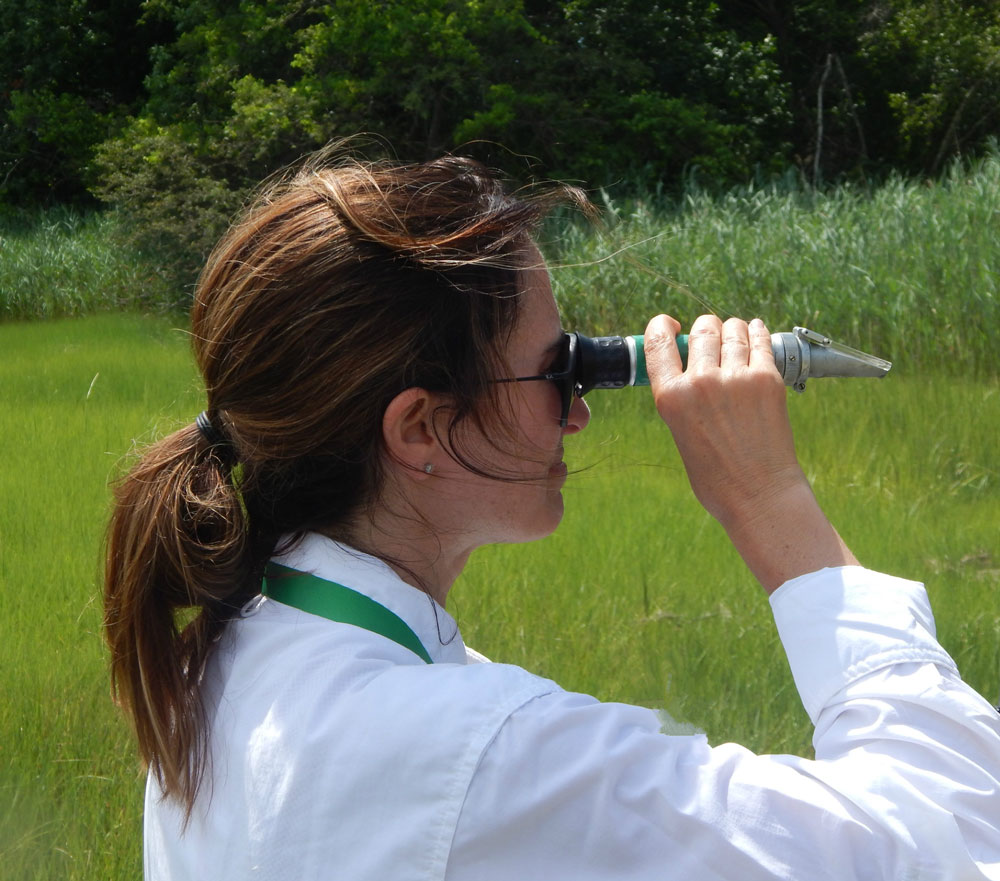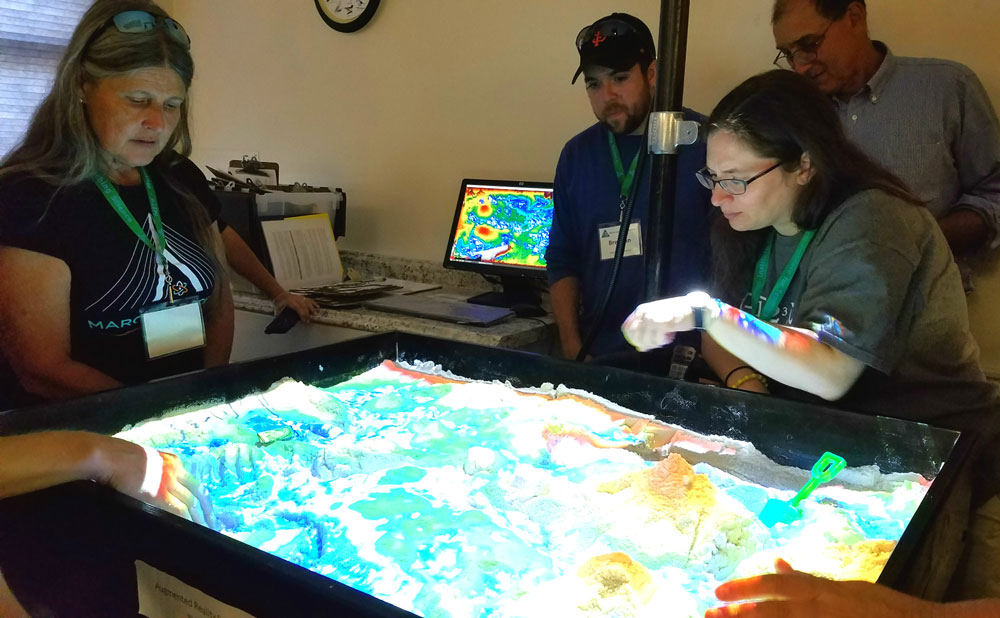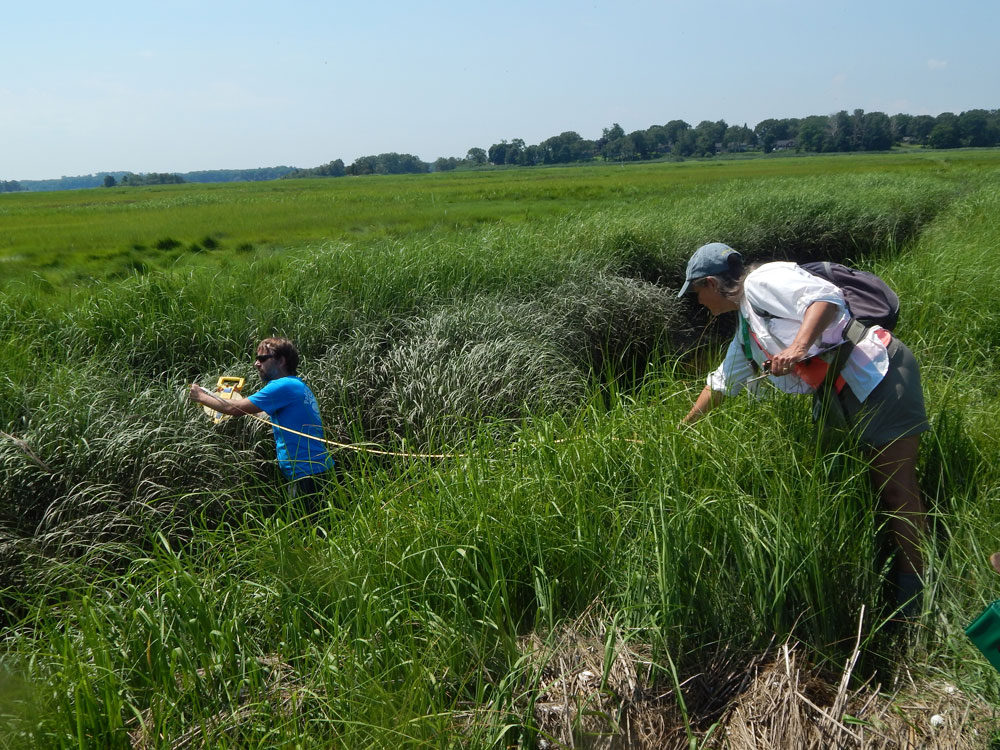Friday, October 20, 2017
For Immediate Release
During MITS North Shore Summer Institute, Educators Investigate Local Effects of Global Change
Wenham, MA – From July 17-21, 2017, middle and high school educators deepened their understanding of the effects of climate change on ecosystem health  during the Museum Institute for Teaching Science (MITS) North Shore Summer Professional Development Institute, “Research and Resiliency: Investigating the Local Effects of Global Changes”. Learning from experts like researchers and land managers, teachers gathered data about ecosystem resilience. Throughout the week, teachers strove to answer the question:How are scientists investigating the effects of human activities impacting our planet, and what steps are citizens taking to help have a more positive impact?
during the Museum Institute for Teaching Science (MITS) North Shore Summer Professional Development Institute, “Research and Resiliency: Investigating the Local Effects of Global Changes”. Learning from experts like researchers and land managers, teachers gathered data about ecosystem resilience. Throughout the week, teachers strove to answer the question:How are scientists investigating the effects of human activities impacting our planet, and what steps are citizens taking to help have a more positive impact?
In the salt marsh at Mass Audubon’s Endicott Wildlife Sanctuary, participants began their inquiry-based ecological investigations. They mucked through the marsh in search of evidence that the environment has been adapting to global change. Using a wide range of tools and techniques, teachers tested water salinity,explored edge erosion, and searched for the presence of invasive species. Peering over interactive maps, participants identified zones vulnerable to sea level rise and gained valuable experience using models to make predictions. Teachers also heard from guest speakers Dr. Anne Giblin, Senior Scientist at the Marine Biological Lab and Lead PI for the Plum Island Ecosystems Long Term Ecological Research Site, who spoke about research evaluating the effects of global change on the island, and Alyssa Novak, Research Assistant Professor at Boston University, who described how she tracks edge erosion of the marsh and the abundance of invasive green crabs.
Narrowing their scope to hydrology, educators assessed flood risk and ecological impact sites (dams, bridges, road streams and marsh crossings)  with help from the Ipswich River Watershed Association. Engaging in “hands-on, minds-on” activities, participants examined how infrastructure is engineered to reduce risk and increase natural systems resiliency and how flow influences water quality. Educators evaluated flood-resistant culverts and dam designs that allow for the movement of water and aquatic organisms. Getting their feet wet and their hands dirty with University of New Hampshire researcher, Wil Wolheim, teachers investigated invertebrate fauna found in suburban stream samples and discussed impacts of land use and climate change on freshwater and aquatic ecosystem health.
with help from the Ipswich River Watershed Association. Engaging in “hands-on, minds-on” activities, participants examined how infrastructure is engineered to reduce risk and increase natural systems resiliency and how flow influences water quality. Educators evaluated flood-resistant culverts and dam designs that allow for the movement of water and aquatic organisms. Getting their feet wet and their hands dirty with University of New Hampshire researcher, Wil Wolheim, teachers investigated invertebrate fauna found in suburban stream samples and discussed impacts of land use and climate change on freshwater and aquatic ecosystem health.
Furthering their investigation of water resources, educators took a trip to Salem, where they delineated an urban watershed and uncovered examples of human impacts on the aquatic environment. With Salem Sound Coastwatch, participants addressed strategies for reducing stormwater pollution (bioswales, rain gardens, and permeable pavement) and designed their own solutions to the problem of sea level rise.
After spending a week conducting field studies, teachers developed their own inquiry-based lesson plans (tailored to state learning standards)  and built research equipment to use with their students. Educators reinforced their experiential learning by engaging in the Science and Engineering Practice of “Obtaining, evaluating, and communicating information” through group presentations, during which they used their knowledge of environmental risk assessment to make recommendations for local communities. They even determined the most effective ways to minimize human impacts on the environment by assessing their own ecological footprints. Back in their classrooms, these teachers will utilize their field experiences to implement exciting lessons that engage their students in ecological research.
and built research equipment to use with their students. Educators reinforced their experiential learning by engaging in the Science and Engineering Practice of “Obtaining, evaluating, and communicating information” through group presentations, during which they used their knowledge of environmental risk assessment to make recommendations for local communities. They even determined the most effective ways to minimize human impacts on the environment by assessing their own ecological footprints. Back in their classrooms, these teachers will utilize their field experiences to implement exciting lessons that engage their students in ecological research.
###
The Museum Institute for Teaching Science specializes in providing hands-on, minds-on, inquiry-based STEM professional development for formal and informal educators. For more information, visit www.mits.org or call 617-328-1515.
